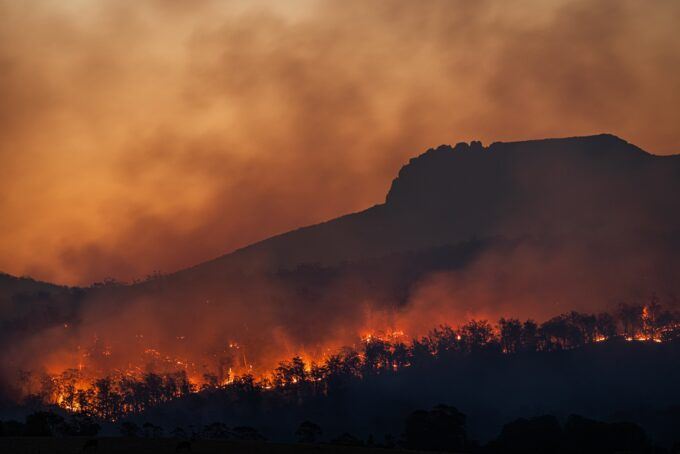
Photo by Matt Palmer
Australia’s funding priorities have been utterly muddled of late. At the Commonwealth level, there is cash to be found in every conceivable place to support every absurd military venture, as long as it targets those hideous authoritarians in Beijing. It seemed utterly absurd that, even as the Australian federal government announced its purchase of over 200 tomahawk cruise missiles – because that is exactly what the country needs – there are moves afoot to prune and cut projects conducted by the Australian Antarctic Division (AAD).
On July 10, an email sent to all staff by the head of division, Emma Campbell, claimed that the AAD “won’t be able to afford” all current positions. Since then, the Department of Climate Change, Energy, the Environment and Water (DCCEEW) has given a flimsy assurance that no jobs will be lost. “The focus will be on finding areas where work performed by those on fixed-term contracts can be incorporated into the work of ongoing staff,” stated a spokesperson for the department.
This all seemed an odd state of affairs, given the promise by the previous Morrison government that an additional AUD$804.4 million would be spent over a decade for scientific capabilities and research specific to Antarctic interests.
Unfortunately for those concerned with the bits and bobs at the AAD, the undertaking was not entirely scientific in nature. Part of the package included AUD$3.4 million to “enhance Australia’s international engagement to support the rules and norms of the Antarctic Treaty system and promote Australia’s leadership in Antarctic affairs”.
Australia’s long-standing obsession with claiming 42 per cent of the Antarctic, one that continues to remain unrecognised by other states, has meant that any exploration or claims by others are bound to be seen as threats. In 2021, the People’s Republic of China built its fifth research station base in Australia’s Antarctic environs, sparking concerns that Beijing may be less interested in the science than other potential rich offerings. They are hardly the only ones.
The AAD, however, has shifted its focus to identifying necessary savings amounting to 16% of the annual budget, a crude, spreadsheet exercise that can only harm the research element of the organisation. As Campbell’s staff-wide email goes on to declare, a review of the future season plan is also being pursued, along with the concern about a “budget situation [that] has made the three-year plan process harder than expected.”
A spokesperson for DCCEEW claimed that the resulting AUD$25 million difference in funding could be put down to the planning difficulties around the commissioned Antarctic icebreaker, the Nuyina. Few could have been surprised that the process resulted in delays, leading to the AAD to seek alternative shipping options.
What proved surprising to the Minister for Infrastructure, Transport, Regional Development and Local Government (when will they ever change such excruciating names?) was that there had been “no cuts to the [AAD] at all”. As Federal Minister Catherine King went on to say, the Australian government had not altered administering “the $804 million budget that is there for the Antarctic Division. There are no cuts, we’re a bit perplexed as to where this story has come from.”
The difference between Canberra’s automatic assumption of reliable finance and delivery has not, it would seem, translated into the individual funding choices made in the ice-crusted bliss of Australia’s southern research stations. According to Nature, two of Australia’s permanent research stations – Mawson and Davis – will not be staffed to their full capacity over the summer period.
The implication for such a budget trim will have one logical consequence. As Jan Zika, a climate scientist working at the University of New South Wales reasons, “When someone says there’s a cut to the AAD, it basically means less science, less understanding of what’s going on.” Zika is unsparing in suggesting that this was “catastrophic” (the word comes easily) given the changes to the sea ice under study. “We’re seeing so little sea ice relative to what we normally see at this time of the year.”
To have such gaps in data collection was also “catastrophic” to scientific and ecological understanding. “If we have data up to a certain date, and then we have a gap for three years, five years, and then we start to get the data again, it doesn’t make it useless. But it makes it really hard for us to get that understanding that we need.”
Zika is certainly correct about the sea ice findings. On June 27, data gathered by the US National Snow and Ice Data Center showed that the sea ice enveloping Antarctica was a record winter low of 11.7 million square kilometres, namely, more than 2.5 million square kilometres below the average for the time between 1981 and 2010.
Other researchers, notably those who collaborate with the AAD, fear the impeding effects of budget cuts. Christian Haas, a sea-ice specialist at the Alfred Wegener Institute of the Helmholtz Centre for Polar and Marine Research in Bremerhaven, Germany sees this as inevitable. Nathan Bindoff of the University of Tasmania, who specialises in physical oceanography, has also suggested that such funding cuts would delay investigative procedures with irreversible effect. “We’re probably going to be too late to address some of these questions.”
This hideous disjuncture says it all: climate change research, trimmed and stripped, thereby disrupting the gathering of data; military purchases and procurement, all the rage and adding to insecurity. While such foolish, exorbitant projects as the nuclear submarine plan under AUKUS is seen as an industry, country-wide enterprise that will produce jobs across the economy, the study of catastrophic climate change is being seen as a problem of secondary relevance, ever vulnerable to the financial razor gang.
This content originally appeared on CounterPunch.org and was authored by Binoy Kampmark.
Binoy Kampmark | Radio Free (2023-08-24T05:58:25+00:00) Cutting Climate Change Research. Retrieved from https://www.radiofree.org/2023/08/24/cutting-climate-change-research/
Please log in to upload a file.
There are no updates yet.
Click the Upload button above to add an update.